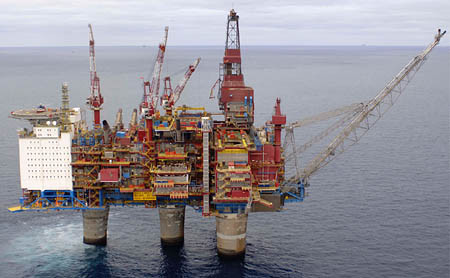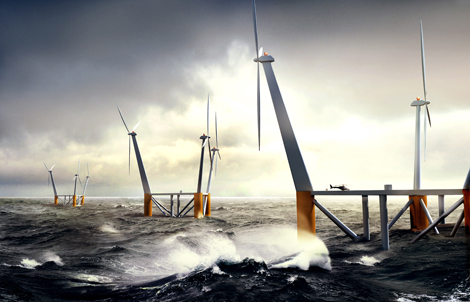Carbon Tax vs Cap’n Trade – an example
EU has currently got a Cap’n Trade scheme going, which oil companies operating on the Norwegian Continental Shelf (NCS) are participating in. One of many problems with such cap and trade schemes is that they block all additional CO2 reduction programmes – as the example below shows:
Let us assume that the Norwegian government feels very rich and decides to spend some of its oil wealth reducing the NCS emissions to zero over the next n years.

Oil platforms need very large amounts of power, which is produced offshore in compact but inefficient natural gas generators
What’s the result?
Net reductions of zero but EU’s green industries are wiped out.
?Why? What happened?
Assumptions for this example to work out:
The emissions from these companies is X% of EU’s total.
EU is planning to reduce the qouta cap by <=X% over the next n years (same amount as NCS emissions or less)
Cap’n Trade blocks all other reduction efforts
Firstly, the effect of this laudable action from the Norwegian government on EU’s total emissions will be exactly zero. This is because the NCS emissions reductions means that the NCS oil companies don’t have to buy X quotas. These quotas will be available for use in the EU, which will have X higher emissions than without the Norwegian efforts. The only effect is that Norway sponsors EU’s emissions reductions in these years.
Additionally, the move will be disastrous for all companies that have invested based on a belief that emissions qoutas will be restricted (and qouta prices high). All sorts of green tech companies in EU will be wiped out by the Norwegian generosity.
A Carbon Tax makes additional reduction efforts cumulative
Compare this with a Carbon Tax. Here Norway’s actions would have no impact on the rest of EU’s interest in reducing emissions – the tax pressure would remain unchanged. Just another area where a Carbon Tax is better than Cap’n Trade.

